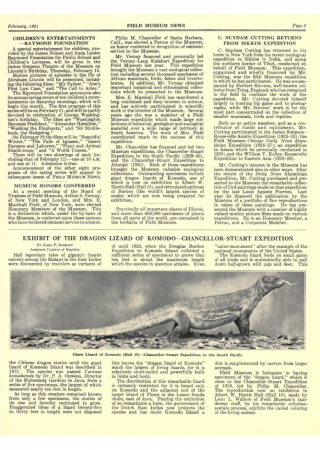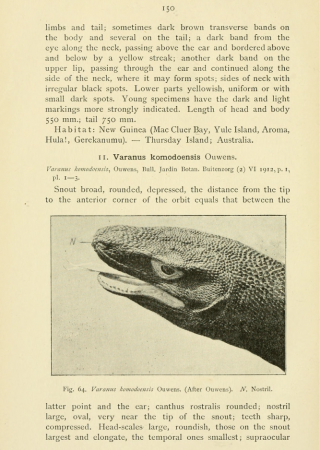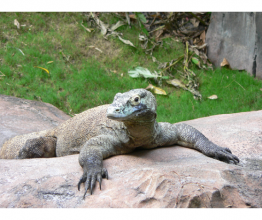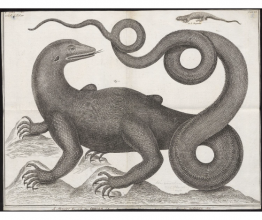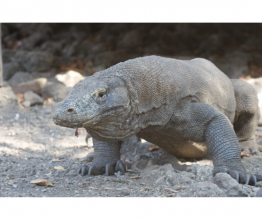Komodo dragon
- ...in the Singapore zoo, a Komodo dragon bit one of its keepers, who then experienced four hours of massive hemorrhaging?
- ...the Komodo dragon was not discovered until 1912, when the Dutch pilot van Deyk made an emergency landing on the island of Komodo?
- ...a Komodo dragon can hunt down prey the size of buffalo, and cases are known of them killing and eating humans?
- ...in the not too distant past, a close relative of the Komodo dragon lived in Australia? This was the giant ripper lizard, Megalania prisca, reaching a length of up to seven meters.
- ...the saliva of a Komodo dragon contains up to 60 species of pathogenic bacteria?
- ...the Komodo dragon is a highly endangered species, with only around 5,000 specimens estimated alive today?
- ...natives of the Komodo Islands long thought that the dragon breathed fire, but the assumed flame was actually flickering of the dragon's forked tongue?
- ...young Komodo dragons are brightly colored and are good climbers, which affords them protection from adult dragons, since the species is cannibalistic?
Basic information:
Phylum – chordates (Chordata)
Class – reptiles (Reptilia)
Maximum length – 3.5 m
Food – large vertebrates
Distribution – Komodo, Rinca, Gili Motang, Gili Dasami and Flores islands
Type of poison – complex mix of various toxins
Distinguishing marks:
A large lizard with fairly stocky body. Head is flat with blunt snout. Legs splay to the side, tail is massive. Coloring is gray-brown to reddish; head can have a yellow tint.
Until recently it was thought that the dragon's mouth contained bacteria that infect the bitten area. Only recently did a team of Australian biologists lead by Brian Fry prove that actually the dragon's saliva contains anti-clotting agents and produces a rapid reduction in blood pressure. The poison, similar to that of the Mexican beaded lizard, is produced by the dragon in special poison glands, located in the lower jaw. Victims of Komodo dragon bites go into shock and bleed profusely. The dragon can thus simply wait for the victim to die of blood loss.

